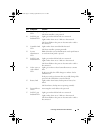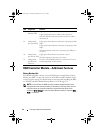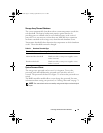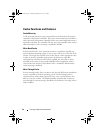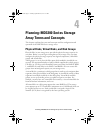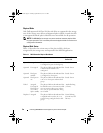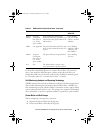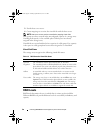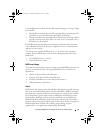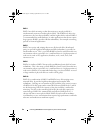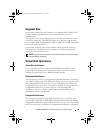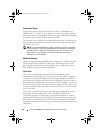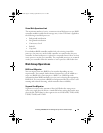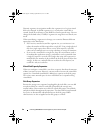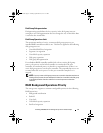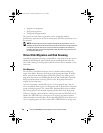
Planning: MD3200 Series Storage Array Terms and Concepts 41
Using multiple physical disks has the following advantages over using a single
physical disk:
• Placing data on multiple physical disks (striping) allows input/output (I/O)
operations to occur simultaneously and improve performance.
• Storing redundant data on multiple physical disks using mirroring or parity
supports reconstruction of lost data if an error occurs, even if that error is
the failure of a physical disk.
Each RAID level provides different performance and protection. You must
select a RAID level based on the type of application, access, fault tolerance,
and data you are storing.
The storage array supports RAID levels 0, 1, 5, 6, and 10. The maximum
number of physical disks that can be used in a disk group depends on the
RAID level:
• 192 for RAID
levels
0, 1, and 10
•30 for RAID
levels
5 and 6.
RAID Level Usage
To ensure best performance, you must select an optimal RAID level when you
create a system physical disk. The optimal RAID level for your disk array
depends on:
• Number of physical disks in the disk array
• Capacity of the physical disks in the disk array
• Need for redundant access to the data (fault tolerance)
• Disk performance requirements
RAID 0
RAID 0 uses disk striping to provide high data throughput, especially for large
files in an environment that requires no data redundancy. RAID 0 breaks the
data down into segments and writes each segment to a separate physical disk.
I/O performance is greatly improved by spreading the I/O load across many
physical disks. Although it offers the best performance of any RAID level,
RAID 0 lacks data redundancy. Select this option only for non-critical data,
because failure of one physical disk results in the loss of all data. Examples of
RAID 0 applications include video editing, image editing, prepress
applications, or any application requiring high bandwidth.
book.book Page 41 Tuesday, September 27, 2011 3:25 PM



